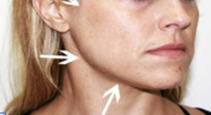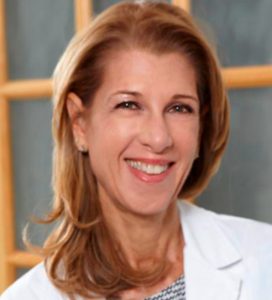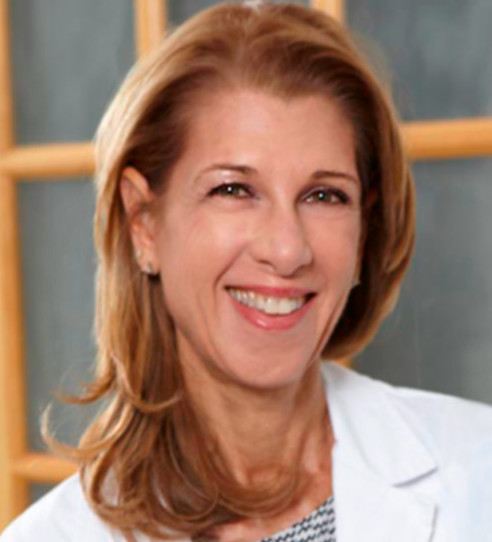By Shellie Goldstein, DACM, AP, LAc
Acupressure is a safe and noninvasive method of stimulating the same key points as acupuncture. While acupuncture uses fine needles to stimulate specific points on the face and body, acupressure can be used on those same points by applying gentle to firm manual or instrument assisted pressure (Huang, 2018). Unlike acupuncture, acupressure is easy to self-perform and requires minimal training or instruction.
Although evidence-based research demonstrates the health benefits of acupressure for reducing muscle tension, improving circulation, and establishing a sense of well-being (Piyush, 2017), studies exploring measurable outcomes of acupressure for appearance enhancement are minimal, with inconsistent results. Regardless, I have been using cosmetic facial acupressure in my practice with significant systemic health benefits and visible appearance enhancing effects. The following case study is one such example.
Patient Information
This patient is a 34 year old female seeking acupressure for appearance enhancement and systemic health.
Chief Complaint
Patient has been dissatisfied with her appearance for the past 2 years. She thinks her face is puffy with swollen with diminished facial tone particularly in the lower cheek and jaw area. She reports skin breakouts that are exacerbated prior to her menses. Patient has chronic neck tension, headaches, and sleep apnea.
Past Medical History
Five years ago, patient contracted Lyme disease. Her symptoms were extreme fatigue with neurological impairment, and right side facial palsy. Patient received acupuncture treatment throughout her illness with significant results.
Family History
Father: living, history of heart disease, elevated cholesterol
Mother: living, no reported illness
Two brothers: living, no reported illness
ROS
Sleep: Although patient reports sleeping 8-10 hours a night, her quality of sleep is poor due to a diagnosis of sleep apnea. Patient is currently participating in a sleep apnea study.
Digestion: Periodic bouts of loose stools, particularly when feeling stressed.
Diet: Patient reports a healthy diet.
Medication/Vitamins: Patient takes a daily multiple vitamin and Buspar for a mood disorder.
Exercise: Patient has a cross-fitness regime with a personal trainer at a local gym (2-3x/week).
Stress: Patient is an attorney and reports her stress level as medium to high.
Homecare: In addition to full body exercise, patient has an excellent face care regime. She uses a natural skincare line appropriate for her skin type and condition. She is consistent with her regiment.
TCM Inspection
Patient was slightly overweight. Her face was pale, swollen, and slightly flushed. Upon palpation her skin was slightly warm and clammy.
Pulse: slippery, floating on the surface, sinking below.
Tongue: pale, swollen, with red petechiae along the tip.
TCM Diagnosis
Although the focus of this acupressure treatment was to improve facial appearance, when treating facial concerns, addressing the underlying patterns of disharmony is germane. Modern cosmetic facial acupuncture is based on the philosophy of ancient Mei Rong, the art of maintaining beauty from within. Grounded in the principles of Chinese medicine, both view a disharmony in the Zang-Fu organs, meridians, qi, blood, and fluids as the core of cosmetic-related complaints. An imbalance of any or all of these can reflect on the face in the form of wrinkles, muscle tone, changes, decreased skin elasticity, skin conditions, a pale, dry appearance, and more. The etiology of these conditions is embedded in the pattern recognition, diagnosis, and treatment of qi, blood, and fluids as they influence and are influenced by the elements, organs, and meridians. Significant treatment results reside in one’s ability to diagnose and treat these underlying root causes to resolve the branch cosmetic concerns.
This patients’ underlying condition is spleen dampness and stomach heat, with slight shen disturbance, and kidney qi deficiency. Treatment strategy is to reduce stomach heat, nourish the spleen and kidneys, and calm shen.
Are you interested in becoming a certified acupuncture professional?
Visit the links below to explore our specialized acupuncture programs at a campus near you:
Methods
The treatment plan was a 20-day regime with an instrument assisted acupressure tool (IAAT) and a point prescribed acupressure protocol. In order to measure treatment results the patient completed a quality of life self-evaluation before and after (Appendix A) and a daily diary card. On the daily diary card (Appendix B), she was instructed to rate her self-observation changes using a Likert-scale of 0 to 4 (0=no change, 1=minimal improvement, 2=moderate improvement; 3=significant improvement, 4=very significant improvement). Change parameters included:
- Facial tone (lift, firmness, tightness)
- Skin quality (evenness, discoloration, texture, glow)
- Wrinkle reduction (shallow, deeper)
- Eyes, eyebrows (brow lift, eyes open/clarity, under eye puffiness, darkness)
- Cheeks (lift, tone, tightness)
- Jawline (tightness, sculpting, firmness)
- Neck (tightness, firmness)
She was also asked to report and describe any additional positive or negative reactions experienced while using the device and protocol.
This treatment plan included:
- 3 office visits (on Days 1, 11, and 20)
- Before/after photographs of face
- Pre/post evaluation questionnaire
- Daily use of the IAAT for 20 days as instructed
- Rating and recording of results of each daily at-home treatment
Day 1
- Pre-evaluation questionnaire
- Photographs to document “baseline” before beginning pilot treatments
- One-on-one training for using the IAAT.
- Detailed instructions for rating/recording results of at-home treatments on days 1-20 on a diary card
Day 11
- Photographs to document changes following 20 consecutive days using IAAT protocol
- Exchange of diary card completed on days 1-10 for new diary card to be used after treatments on days 11-20
- 3 office visits (Days 1, 11, and 20)
- Before/after photographs of face (Days 1 and 20)
- Daily use of the instrument assisted acupressure tool for 10 days as instructed
- Daily recording and rating of treatment results on a standardized at home Diary Card
- Completion of pre-post study Assessment Questionnaire
Body acupressure points included K3, SP 3, 4, 6, ST 42, 36, LI 4, 11, HT 7
Face points included Yin tang, BL 2, GB 14, ST 8, 7, 6, 4, 3, SI 18, CV 24, 23, TH 17, K 27, light massage around o. oculi and medium pressure along the platysma muscle.
Outcome
At the end of the 20 day regime, patient noted improvement in the following areas:
- Facial tone (lift, firmness, tightness)
- Skin quality (evenness, discoloration, texture, glow)
- Wrinkle reduction (shallow, deeper)
- Eyes, eyebrows (brow lift, eyes open/clarity, under eye puffiness, darkness)
- Cheeks (lift, tone, tightness)
- Jawline (tightness, sculpting, firmness)
- Neck (tightness, firmness)
- Self-image
Patient also reported a decrease in her headaches, improved sleep, and a general feeling of well-being.
Discussion
Visible improvement in this patient’s appearance are noted by the before and after photographs (Appendix 3). Analyses of the self-reported daily diary data and assessment questions demonstrate changes in the variables of skin quality face tone, wrinkle reduction, eyes and brows, cheeks, jaw line, and neck enhancement. According to the principles of Chinese medicine and cosmetic facial treatment, her reported improvement in headaches, sleep, wellbeing, and self-esteem also contribute to her enhanced appearance. The evidence obtained from this case study warrants further study. A larger sample size, potential bias, and potential confounding variables will need to be addressed.
Appendix A
| Day 1 | Day 20 |
 |
 |
Appendix 2
Daily Diary Card
Appendix 3
| Day 1 | Day 20 |
 |
 |
References
Hwang, U. J., Kwon, O. Y., Jung, S. H., Ahn, S. H., & Gwak, G. T. (2018). Effect of a Facial Muscle Exercise Device on Facial Rejuvenation. Aesthetic surgery journal, 38(5), 463–476.
Piyush, Metha, Vishwas, Dhapte, Shivajirao, Kadam, Vivdha, Dhapte. (2017). Contemporary acupressure therapy: Adroit cure for painless recovery of therapeutic ailments. Journal of Traditional Complementary Medicine. Apr: 7(2): 251-263.
Featured Posts:


